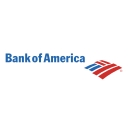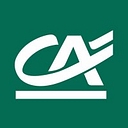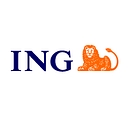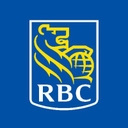
Want to dig deeper on Bank of America Corp and thousands of companies?
Rapidly search an extensive universe of public and private content — earnings transcripts, company filings, equity research, trade journals, and more.
Request a Free TrialCompanies by industry
Aerospace & DefenseAutomobile ComponentsAutomobilesBanksBeveragesBiotechnologyBroadline RetailCapital MarketsChemicalsCommunications EquipmentConsumer FinanceConsumer Staples Distribution & RetailContainers & PackagingElectric UtilitiesElectronic Equipment, Instruments & ComponentsEnergy Equipment & ServicesEntertainmentFinancial ServicesFood ProductsGround TransportationHealth Care Equipment & SuppliesHealth Care Providers & ServicesHotels, Restaurants & LeisureHousehold DurablesHousehold ProductsIT ServicesIndustrial ConglomeratesIndustrial REITsInsuranceInteractive Media & ServicesLife Sciences Tools & ServicesMachineryMediaMetals & MiningMulti-UtilitiesOil, Gas & Consumable FuelsPersonal Care ProductsPharmaceuticalsSemiconductors & Semiconductor EquipmentSoftwareSpecialized REITsSpecialty RetailTechnology Hardware, Storage & PeripheralsTextiles, Apparel & Luxury GoodsTobaccoWireless Telecommunication Services
Bank of America Corp Earnings - Analysis & Highlights for Q1 2025
Overview
PositivesNegativesOutlook
- Sales and trading revenue in Q1 grew by 9% YoY to $5.6 billion.
- The company grew revenue by 6% YoY, net income by 11%, and EPS by 18% in Q1.
- Net interest income grew by 3% YoY and is up from Q4 to the high end of the guidance range given three months ago.
- The company generated $7.4 billion in net income or $0.90 per diluted share in Q1, representing good growth over both last quarter and the year-earlier period.
- Revenue, excluding DVA, improved by 10% from Q1 2024 on good sales and trading results and $230 million of other income on leveraged finance positions similar to Global Banking.
- Consumer loans are down more than $200 billion, home equity loans are down more than $125 billion, and unsecured credit card loans are down by more than $60 billion.
- The company expects more cuts in interest rates and more variability in the market expectations for economic growth.
- The company's consumer loans are down more than $200 billion.
- The company's consumer loans are down more than $200 billion.
- The company expects to see a little more loan and deposit activity with lower rates.
- The company expects the NII impact of growth to offset some of the interest rate impact from lower rates.
- The company expects to see the Fed funds rate ultimately get down to 3%, 3.5% type of levels, which is more of a traditional normal.
- The company expects a negative impact on expected NII growth near term, but it improves as the funding costs more fully reflect those cuts.
Q&A Highlights from Bank of America Corp Earnings Call Q1 2025
- Analyst asked about the impact of recent volatility on Bank of America's business segments and whether there has been an increase in deposit flight to safety or volatility in trading.
- The company has seen significant pickups in customer activity in Global Markets, and the environment remains constructive. However, there has not been any major volatility or deposit flight to safety. The company continues to drive deposits on a daily basis.
- The company has seen significant pickups in customer activity in Global Markets, and the environment remains constructive. However, there has not been any major volatility or deposit flight to safety. The company continues to drive deposits on a daily basis.
- Analyst asked about the increased attention on the bank's disclosures regarding its stress tests.
- The bank has put extra disclosure to remind people of its past stress tests, which were conducted in 2019 and 2020. The bank believes that the same discussion about a potential recession came up in 2022 and 2023, but the consumer held in, and the growth rate was not as low as expected. The bank tests its trading book stress test on a continuous basis, and it also does quarterly tests on different ways the economy can get knocked into recession. The bank wants to give reassurances to its stakeholders that it is in a good position to withstand a potential economic downturn.
- The bank has put extra disclosure to remind people of its past stress tests, which were conducted in 2019 and 2020. The bank believes that the same discussion about a potential recession came up in 2022 and 2023, but the consumer held in, and the growth rate was not as low as expected. The bank tests its trading book stress test on a continuous basis, and it also does quarterly tests on different ways the economy can get knocked into recession. The bank wants to give reassurances to its stakeholders that it is in a good position to withstand a potential economic downturn.
- Analyst asked about the impact of deregulation on Bank of America's business and how it will make it easier to do business with customers.
- Brian T. Moynihan explained that the new administration aims to reduce regulatory burden by reducing the number of regulations and the size of the federal administration. He believes that this will help Bank of America provide liquidity to its clients, both in good times and times of stress. He also mentioned that the company has a $1.2 trillion balance sheet in cash and government-guaranteed securities, which is currently capitalized under the SLR, and that relief in this area would help reduce operational costs.
- Brian T. Moynihan explained that the new administration aims to reduce regulatory burden by reducing the number of regulations and the size of the federal administration. He believes that this will help Bank of America provide liquidity to its clients, both in good times and times of stress. He also mentioned that the company has a $1.2 trillion balance sheet in cash and government-guaranteed securities, which is currently capitalized under the SLR, and that relief in this area would help reduce operational costs.
- Analyst asked about the potential savings from reduced regulatory costs and the impact on the company's long-term debt posture.
- Brian T. Moynihan stated that the company's long-term debt posture could be reduced by a few hundred billion dollars due to the reduction in regulatory costs. He also mentioned that the company's size could be reduced by $100-$150 billion, as it has grown primarily by fluffing its balance sheet to meet certain metrics that are not as important as they seem.
- Brian T. Moynihan stated that the company's long-term debt posture could be reduced by a few hundred billion dollars due to the reduction in regulatory costs. He also mentioned that the company's size could be reduced by $100-$150 billion, as it has grown primarily by fluffing its balance sheet to meet certain metrics that are not as important as they seem.
- Analyst asked about the net interest margin (NIM) in 2024, which was flat to the fourth quarter levels and 2.05% to 2.10%.
- Alastair Borthwick confirmed that the NIM in 2024 was flat to the fourth quarter levels and 2.05% to 2.10%.
- Alastair Borthwick confirmed that the NIM in 2024 was flat to the fourth quarter levels and 2.05% to 2.10%.
- Analyst asked about the "all other fee line" on a consolidated basis, which was close to breakeven versus a loss due to some tax credits.
- Alastair Borthwick explained that the "all other fee line" is generally impacted by tax credit activity, and in this quarter, there were also some leveraged finance positions that were written down in prior quarters and sold for a gain. Additionally, there was a legal settlement and some Visa B cleanup, which offset some of the delta. The company estimates that the "all other fee line" was worth about $0.03 this quarter.
- Alastair Borthwick explained that the "all other fee line" is generally impacted by tax credit activity, and in this quarter, there were also some leveraged finance positions that were written down in prior quarters and sold for a gain. Additionally, there was a legal settlement and some Visa B cleanup, which offset some of the delta. The company estimates that the "all other fee line" was worth about $0.03 this quarter.
- Analyst asked about Bank of America's investment in international markets given the tariff overhang.
- Brian T. Moynihan, CEO of Bank of America, stated that the company will continue to invest where it sees opportunities, including in international markets. He emphasized the company's long-standing presence in countries such as Japan, India, Australia, and Europe and its expertise in helping national champions and multinational companies expand globally. He also noted that the company is now focusing on smaller, family-owned businesses in production supply chains. He mentioned that the company is watching its clients and helping them understand the implications of the tariff overhang on their supply chain alignment. He concluded by saying that the company's investment strategy may ebb and flow, but its goal is to have a relentless pace of relationship manager investments and to make its team more efficient through the use of machine learning and AI.
- Brian T. Moynihan, CEO of Bank of America, stated that the company will continue to invest where it sees opportunities, including in international markets. He emphasized the company's long-standing presence in countries such as Japan, India, Australia, and Europe and its expertise in helping national champions and multinational companies expand globally. He also noted that the company is now focusing on smaller, family-owned businesses in production supply chains. He mentioned that the company is watching its clients and helping them understand the implications of the tariff overhang on their supply chain alignment. He concluded by saying that the company's investment strategy may ebb and flow, but its goal is to have a relentless pace of relationship manager investments and to make its team more efficient through the use of machine learning and AI.
- Analyst asked about Bank of America's small business lending growth and how it compares to peers.
- Brian T. Moynihan, CEO of Bank of America, stated that small businesses are trying to understand the implications of various policies, including deregulation, tariff policy, immigration policy, and tax policy. He noted that small businesses are concerned about how these policies will affect their businesses and where they should invest. He mentioned that small business loan growth has been strong, but that line usage has been relatively muted due to uncertainty about the current environment. He also noted that the company has seen recession-resistant growth in healthcare lending, such as lending to doctors and veterinarians. He concluded by saying that small businesses are worried about the current environment and may slow down their decision-making process until they have a better understanding of the implications of the policies.
- Brian T. Moynihan, CEO of Bank of America, stated that small businesses are trying to understand the implications of various policies, including deregulation, tariff policy, immigration policy, and tax policy. He noted that small businesses are concerned about how these policies will affect their businesses and where they should invest. He mentioned that small business loan growth has been strong, but that line usage has been relatively muted due to uncertainty about the current environment. He also noted that the company has seen recession-resistant growth in healthcare lending, such as lending to doctors and veterinarians. He concluded by saying that small businesses are worried about the current environment and may slow down their decision-making process until they have a better understanding of the implications of the policies.
- Analyst asked about the company's confidence in the growth of its commercial loan portfolio, particularly the dark blue non-US commercial loan portfolio.
- Alastair Borthwick, Chief Financial Officer, explained that the company has diversified its loan book over time, supporting clients who are multinationals in the United States and around the world. He also mentioned that the loan growth was diversified across all lines of business, including small business banking, business banking, the commercial bank, ex-CRE, Global Corporate Investment Bank, Global Markets, and Wealth. He further explained that the company's commercial loan portfolio is secured, investment-grade, and diversified, with good client selection, and virtually no charge-offs.
- Alastair Borthwick, Chief Financial Officer, explained that the company has diversified its loan book over time, supporting clients who are multinationals in the United States and around the world. He also mentioned that the loan growth was diversified across all lines of business, including small business banking, business banking, the commercial bank, ex-CRE, Global Corporate Investment Bank, Global Markets, and Wealth. He further explained that the company's commercial loan portfolio is secured, investment-grade, and diversified, with good client selection, and virtually no charge-offs.
- Analyst asked about the impact of the unemployment rate on the company's FICO score inflation.
- Brian T. Moynihan, Chief Executive Officer, explained that the higher level of charge-off rates in cards is due to the normalization of the portfolio after the pandemic, rather than FICO score inflation. He mentioned that the company has seen charge-off rates drop to levels that were not sustainable, such as in 2020, and that the current rates are closer to the charge-off rates in 2019. He also stated that the company's internal stress test projects losses to be closer to the charge-off rate that the company underwrote prior to the financial crisis, which was 5.5%.
- Brian T. Moynihan, Chief Executive Officer, explained that the higher level of charge-off rates in cards is due to the normalization of the portfolio after the pandemic, rather than FICO score inflation. He mentioned that the company has seen charge-off rates drop to levels that were not sustainable, such as in 2020, and that the current rates are closer to the charge-off rates in 2019. He also stated that the company's internal stress test projects losses to be closer to the charge-off rate that the company underwrote prior to the financial crisis, which was 5.5%.
















